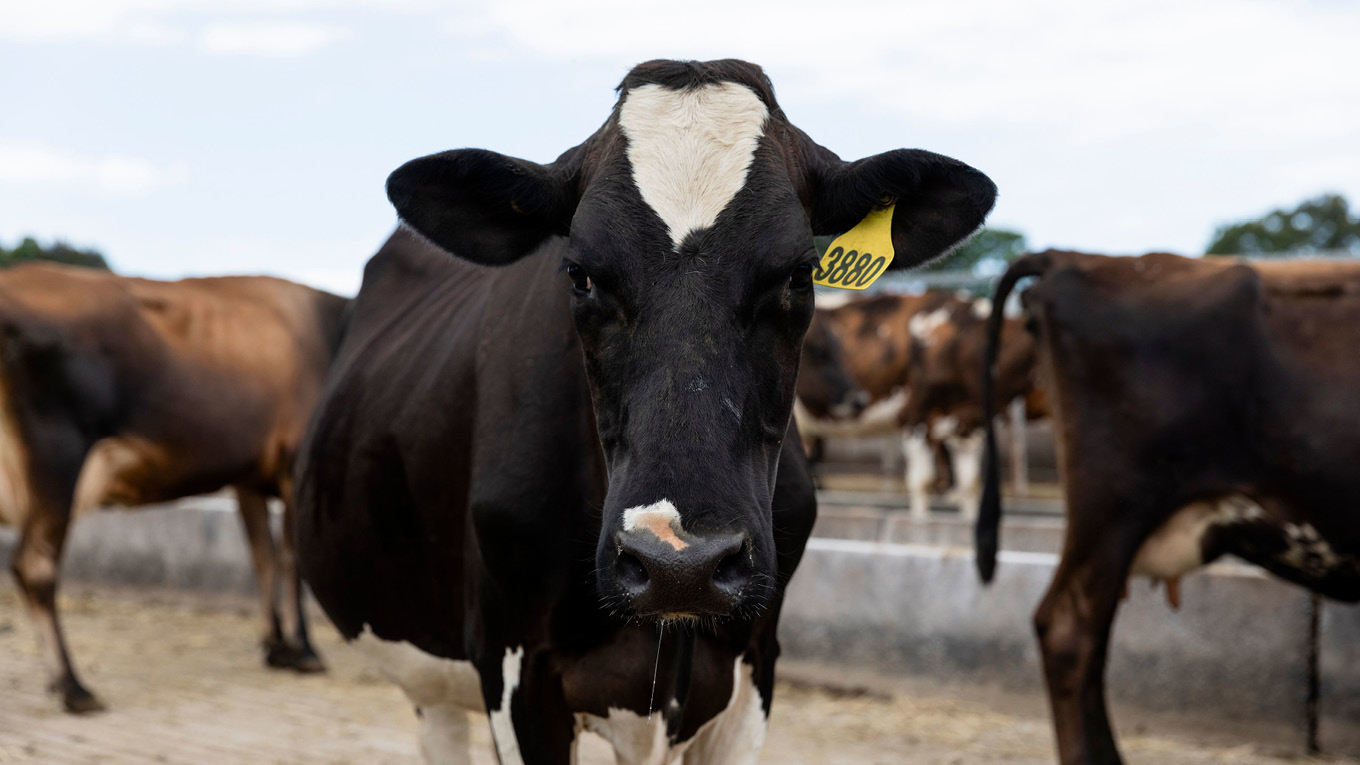Emergency Animal Disease Preparedness
Know the signs for Foot-and-Mouth Disease and Lumpy Skin Disease.
Report anything unusual to the Emergency Animal Disease Watch Hotline on 1800 675 888 (free call within Australia).
There is currently a heightened risk of both Foot-and-mouth disease and Lumpy Skin Disease entering Australia following outbreaks in nearby countries. It’s vital that everyone in the Australian Dairy industry play their part in preventing outbreaks of these diseases in our country.

Useful resources
-
CSIRO Report: Lumpy Skin Disease transmission studies in milkPDF, 13.06 MB
-
Farm Biosecurity planPDF, 597.53 KB
-
Staff and visitor risk assessment templatePDF, 130.39 KB
-
On-Farm Footbath set upPDF, 565.87 KB
-
Emergency animal diseases preparedness factsheet PDF, 86.87 KB
-
Biosecurity gate sign template (900mmd x 600mmw)PDF, 76.45 KB
-
Checklist for MTOsPDF, 139.04 KB
-
Decontamination and disposal of milk FMD outbreakPDF, 62.55 KB
Dairy farmers can also obtain free corflute biosecurity gate signs, dairy posters, visitor logs and biosecurity plans from their Dairy Australia Regional Team.
More information
-
Foot-and-Mouth Disease [FMD]
- Frequently Asked Questions
- Foot-and-Mouth Disease National Response Plan (AUSVETPLAN disease manual)
- General biosecurity information
Please visit the Animal Health Australia website for additional information and resources.
Report a concern: Phone 1800 675 888
-
Lumpy Skin Disease [LSD]
- Frequently Asked Questions
- National Response Plan (AUSVETPLAN disease manual)
- General biosecurity information
Please visit the Animal Health Australia website for additional information and resources on the Lumpy Skin Disease.
Report a concern: Phone 1800 675 888
Webinars
FMD: Dairy farmer webinar
FMD: Dairy processor webinar
What should farms do now to prepare?
There are some simple steps all farmers and farm workers can undertake to help reduce the risk of Foot-and-mouth Disease and Lumpy Skin Disease outbreaks on their farms.
-
Be aware of the signs of each disease (see the links above) and keep a close eye on your herd for any signs of an outbreak. Immediately report anything unusual to the Emergency Animal Disease Watch Hotline on 1800 675 888.
-
Ensure your farm has an up-to-date biosecurity plan and everybody on the farm team understands and complies with the plan. Download and update your farm's biosecurity plan.
-
Make plans to limit unnecessary stock movements across public roads. Where unavoidable, plan how you will implement decontamination and disinfection of road crossings in the event of an outbreak.
-
Vehicle access (e.g. tanker and feed truck tracks) must be clean and remain free of livestock, manure and effluent. Failure to do so is likely to affect milk collection in the event of an outbreak.
-
Ensure livestock movements are recorded on the National Livestock Identification System (NLIS) database each time livestock is moved between properties.
-
Ensure that anyone who has travelled outside Australia (especially Bali and Indonesia), excluding FMD-free countries, does not come on-farm for at least 7 days. Undertake risk assessments for all visitors or staff that come onto farm. Emergency Animal Disease training
Dairy farmers and service providers may wish to undertake further training on Emergency Animal Diseases. Dairy Australia recommends the free online training courses offered by Animal Health Australia. These include:
- EAD foundation course
- FMD awareness – protecting your livelihood and community
Both courses can be accessed on the Animal Health Australia website.




